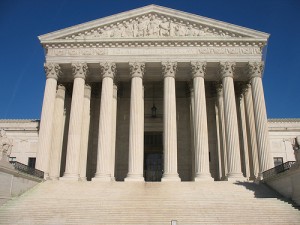Monday Morning Review: Local Governments in the Federal Appellate Courts
Posted
28 Oct 2014 in Monday Morning Review
Here are last week's published decisions involving local governments: Third Circuit
Third Circuit
- Thorpe v. Borough ofJim Thorpe, No. 13-2446 (Oct. 23, 2014): The court reversed district court's conclusion that Native American Graves Protection and Repatriation Act requires the Borough to disinter Jim Thorpe. In the court's view, "Congress could not have intended th[is] kind of patently absurd result."
- Davis v. City of Greensboro, No. 13-1820 (Oct. 22, 2014): In suit brought by police officers and firefighters claiming that the City failed to pay certain wages and benefits, the court affirmed district court's denial of the City's motion to dismiss because governmental immunity does not protect the City from breach of contract and estoppel claims.







